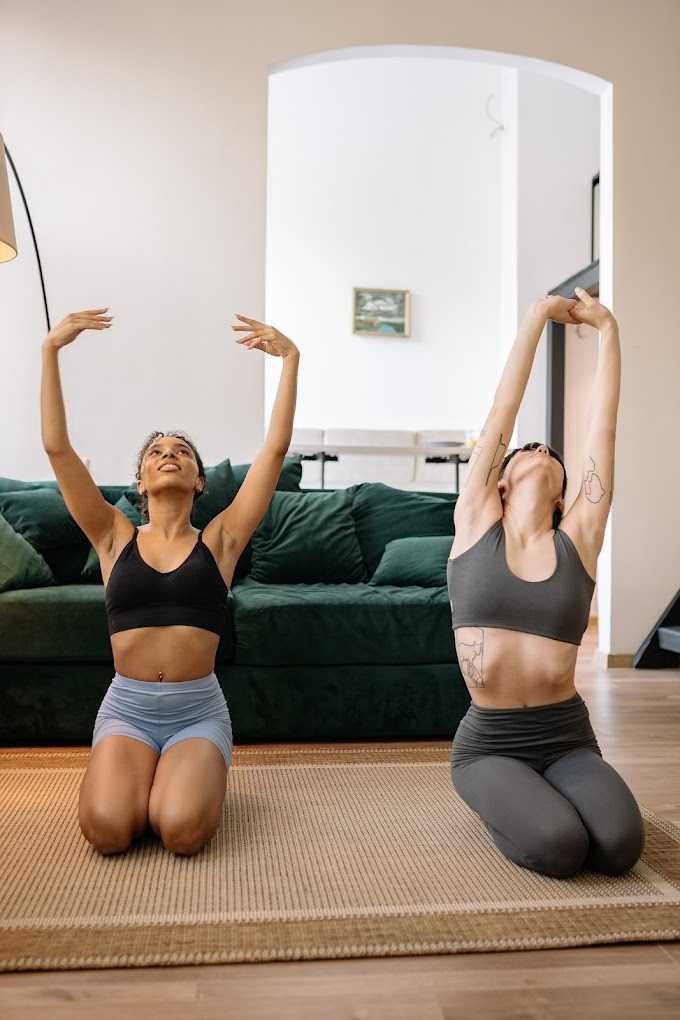Yoga for Gastric Problem 2022 || Pet Ki Gas Ke Liye Yoga Asana 2022 ||
Ayurveda and Yoga are accepted to be sister sciences. Whenever followed together, it can bring about a greatest effect on your wellbeing emphatically. As per Ayurveda, all our medical problems are because of an awkwardness between the three components or Doshas. At the point when these three Doshas, i.e., Vatta, Pitta, and Kapha, are in balance, you are fit as a fiddle. In any case, a lopsidedness or abundance of both of them can have numerous medical problems.
Gastric issues result from impeded assimilation. Also Ayurveda accepts this is a direct result of a lopsidedness in the Vatta Dosha (air component). Vatta Dosha controls generally our stomach related organs. Quieting our Vatta assists with disposing of gastric issues. Yoga acts the hero.
A wide range of Yoga center around revising these three Doshas. There are Yoga Asanas that quiet our Vatta Dosha which fixes our gastric issues. These yoga asanas benefit us by coordinating legitimate breathing strategies that influence your gastrointestinal organs.
Yoga asanas for gastric-related issues
1. Pawanmuktasana
Pawanmuktasana, otherwise called the breeze discharge present or the gas discharge present.
Pawanmuktasana, as the name proposes, gets itself from two words "Pawan", importance wind or gas, and "Mukta", significance delivery or help. This asana helps by delivering the gas in our stomach. Gas frequently happens because of food heartburn. Furthermore acid reflux creates a great deal of issues, more than stomach distress like headache, joint agony, and so on
What are the advantages?
* It helps in disposing of the gas shaped because of acid reflux
* It deals with the muscles of the back, biceps, rear arm muscles, and hips
How to get it done?
* In the first place, rests recumbent on a mat. Stretch your arms, legs, and take a couple of breaths. This is the underlying posture. The asana is named Savasana
* Flex your knees so your legs make a 90° point with your thighs
* With a breathe out, bring your knees away from plain view
* At the same time raise your head to bring it near the knees
* Clutch this position for a couple of moments and afterward discharge
* Keep the breathing typical while you hold the stance.
2. Balasana
This yoga is otherwise called Garbhasana and Shashankasana. Balasana implies kid's posture, where "Bala" signifies youngster, and "asana" signifies act. Balasana is frequently done as end yoga; this yoga centers around legitimate breathing procedures. The breathing ought to be long, slight, slow, and consistent. The essential idea is you really want to breathe out while flexing and breathe in while extending.
What are its advantages?
* It diminishes weakness, nervousness, and stress
* Further develops processing
*It fixes back torment
How to make it happen?
* Flex your knees and plunk down behind you in a bowing position or Vajrasana
* Start with a breathe out. Loosen up your hands high up, oppositely at the level of your shoulder
* Flex at your hips and begin twisting forward so your brow contacts the floor
* Clutch this for a couple of moments with typical breathing, And retreat to the underlying posture with a breathe in.
3. Paschimottanasana
Paschimottanasana, otherwise called the situated ahead twist present, is one of the essential asanas done while sitting. What's more is one of the essential yoga presents. As the name implies, this asana essentially centers around the portability of the hip joint by flexing it.
What are the advantages?
* As the body is extended forward, there is expanded tension on the stomach related organs. This Improves processing and subsequently helps gastric-related medical problems
* It unwinds and quiets your entire body. It likewise lessens pressure
* Practices the vertebral section and gives it a legitimate shape. It additionally helps individuals with back torment
* It has demonstrated advantageous for patients with diabetes and liver issues
How to make it happen?
* Plunk down over a mat, with your legs loosened up
* With a breathe in, raise your arms over your head so it brings up towards the roof
* With a breathe out. Twist advances, flexing at your hips from the lower back. So your hands near your feet and chest near your knees
* Clutch this situation for a couple of moments with ordinary breathing without lifting the knees or head up and return to the underlying situation with a breathe in.
4. Supta Matsyendrasana
The word Supta Matsyendrasana has its underlying foundations in Sanskrit, where "Supta" signifies to lean back, "Matsya" signifies fish, and "Endra" alludes to Lord Indra. Henceforth, "Matsyendrasana" on the whole means Lord of the fishes' posture. This asana is a changed type of Ardha Matsyendrasana, which is done in a sitting position. Supta Matsyendrasa principally centers around your spine and mid-region by bending them. Thus, many individuals likewise utilize the term turned spine posture to allude to it.
What are the advantages?
* Works on the adaptability of the spine and gives it a legitimate shape
* Lessens the rate of spinal pain
* It assists patients with sleep deprivation by calming body and brain weakness, and ultimately, actuating rest
* Further develops processing and fixes gastric issues
* It practices your inward organs
How to get it done?
* Rests recumbent over a mat on your back
* Loosen up your shoulder horizontally to your sides so they lie in accordance with your shoulder
* Start with a breathe out. Flex your right knee away from plain view. Also get it over your midline with the goal that your right knee contacts the floor to your left side
* All the while, stretch your neck to the contrary side with the goal that your head faces the left
* Hang on for a couple of moments and return to the underlying posture
* Rehash something similar with your contrary legs
* Breathe in, come to the middle and breathe out, change to the contrary side, and hold with ordinary relaxing.
5. Ananda Balasana
Ananda Balasana is an altered rendition of Balasana. Otherwise called the cheerful child act like the name proposes, where "Ananda" signifies content and "Bala" signifies child. Some additionally allude to it as the dead bug present, as the asana looks like a cheerful child or a dead bug. Be that as it may, the agreeable child present is more acknowledged due to a hopeful methodology. Ananda Balasana is frequently done as heat up yoga to set oneself up prior to accomplishing more serious yoga asanas.
What are the advantages?
* Extends the muscles of hips, thighs (like hamstrings), biceps, rear arm muscles
* Further develops pulse
* Gives a legitimate shape to your spine and stretches it
* Benefits patients with lower back torment
* Further develops processing and fixes gastric issues
How to get it done?
* Rests on your back, recumbent over a mat
* With a breathe out, twist your knees away from plain view
* Take a stab at holding your feet' thumb with your separate hands
* Clutch this situation for a couple of moments with typical breathing and let free
* Breathe in while releasing yourself to return to the underlying position.










0 Comments
If you any doubts , please let me know